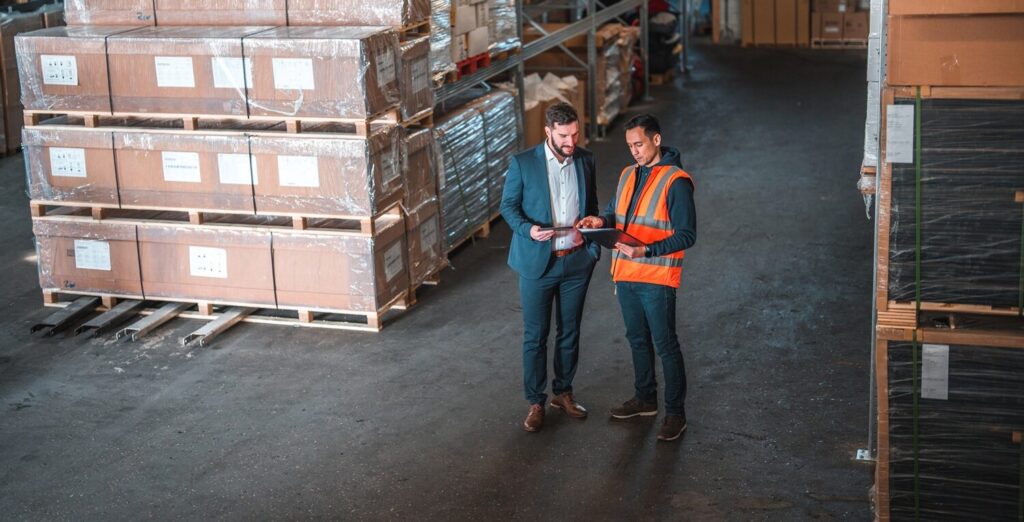The manufacturing industry is on the precipice of transformative change largely driven by the sustainability agenda. And CEOs are at the forefront of this change, needing to champion sustainability and environmental justice and also embrace innovative green technologies to cut greenhouse gas emissions (GHG). Yet, despite the pressing need for all businesses, regardless of size, to tackle this ecological threat, the International Energy Agency (IEA) reports that global energy-related emissions grew last year by 1.1%, reaching another record high.
According to the World Meteorological Organization (WMO), there is no end in sight to rising greenhouse gas emissions, with manufacturers singled out as a major contributor. The United Nations Climate Change division report found that approximately 34 per cent of all emissions are from manufacturers, which is alarmingly high. It is no wonder why manufacturers must take immediate action to address their portion of emissions.
Yet, the reduction of GHG is not only a manufacturing problem but a worldwide environmental challenge to stay within the 1.5°C temperature goal of the Paris Agreement. Leaders are up against it, as GHG tracking and reporting emissions is notoriously tricky, but what else is holding manufacturers back from addressing these complex challenges?
Why are GHG challenges, well so challenging?
Various hurdles hold back manufacturers from addressing GHG emissions. Reporting and tracking accurate GHG data are a prevalent challenge, underscored by the BCG indicating that just 10 per cent of companies comprehensively measure all their emissions. PricewaterhouseCoopers (PwC) indicates that this is likely due to the time-consuming nature of the task. Other additional challenges vary and include a lack of expertise and organisational structure to successfully measure GHG emissions. Additionally, many businesses might not also understand how their operations may impact communities or where to start.
To address these challenges and also gain stakeholder engagement, embracing sustainable manufacturing practices can help bridge the GHG reporting gap by promoting economically sound processes from the start. In a research paper titled A holistic approach to sustainable manufacturing: Rework, green technology, and carbon policies, the experts assert that sustainable manufacturing combined with green tech can “not only reduce waste and improve productivity but also minimise ecological footprint[s] and contribute to the advancement of global sustainability goals.”
Let’s get started – the top 5 strategies to address GHG emissions
Sustainable technology offers a promising solution CEOs can leverage. Savvy leaders recognise the value of green tech, with sixty-four per cent of CEOs surveyed by Gartner Inc. indicate that combining digitalisation, such as AI adoption, and environmental sustainability is a key growth opportunity. It’s a growing market activated by the push to increase environmental, social, and government (ESG) progress and act as an enabler of GHG tracking.
The numbers speak for themselves, with Fortune Business Insights predicting the sustainable technology market is ready for a boom and set to grow from $19.76 billion in 2024 to $89.97 billion by 2032. Here are the top five strategies that can unlock enhanced sustainability progress for a better tomorrow:
1. Embrace smart manufacturing
Smart manufacturing inherently supports sustainability progress and reducing GHG emissions. Smart manufacturing drives businesses to adopt solutions such as renewable energy, AI, big data technologies, and smart factories. By implementing these strategies, companies not only boost productivity but also reduce overall environmental emissions.
2. Sustainable tech powering ESG progress
According to Gartner, ESG software offers real-time insights with automated and efficient collection, analysis, insight and reporting tools. This data can assist manufacturers in knowing the areas they need to address and will offer actionable insights, empowering leaders to make quicker strategic decisions.
3. Capture wins with AI and automation
Gartner also promotes the use of AI, as it improves business operations and processes to cut GHG emissions by reducing a business’s environmental footprint. AI can also enable automation to “monitor, predict, mitigate and improve environmental issues”.
4. Deploy a long-term perspective
A Deloitte report that GHG reduction is an uphill battle and by implementing a long-term perspective, businesses will not only be focused on the current state of their emissions. Leaders will encourage workers to implement sustainability initiatives to measure and execute accurate emissions reporting effectively.
5. Intelligence rising – ESG knowledge is power
As regulations and policies change, leaders must foster a culture of continuous learning to stay across all GHG reporting requirements. Knowledge is king, and leaders must stay on top of recent developments through articles, training, and conventions to ensure an accurate perspective of GHG requirements.
A call to action to use green tech to enable GHG transparency and reporting
In summary, manufacturers have a big job ahead of them. There is mounting pressure to reduce emissions quickly, and the time to act is now. CEOs can optimise their operations by leveraging smart manufacturing and green tech, which will not only enable GHG reporting but will also support them in their ESG and sustainable journey. But where do you start?
Embracing a sustainable framework like COSIRI (Consumer Sustainability Industry Readiness Index) empowers CEOs with clarity on their current standing and guides them on the strategic, tailored steps to take towards unlocking more positive ESG outcomes. It has been a complete game-changer for driving sustainable business success for our INCIT partners. To learn more about COSIRI, the leading ESG assessment framework globally endorsed by the World Economic Forum (WEF), or learn more about our assessments, please visit our website.



